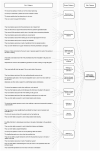Mobility and postural limitations perceived by transtibial amputees undertaking agricultural activities: a qualitative study
- PMID: 37738516
- PMCID: PMC10519270
- DOI: 10.1080/07853890.2023.2258915
Mobility and postural limitations perceived by transtibial amputees undertaking agricultural activities: a qualitative study
Abstract
Purpose: In Colombia, 98% of landmines occur in rural areas, where the main victims of amputation are farmers. The challenges these amputees face in their agricultural work remain unknown. The aim of this study is to determine the mobility and postural limitations these farmers face in carrying out their daily activities.
Method: Forty-nine participants meeting the following criteria were interviewed: transtibial amputee, 18 years and over, performs agricultural labour and wears the prosthesis daily. Subsequently, the interview transcripts were subjected to a content conventional analysis and responses were organized according to the abstraction process to identify categories and subcategories of the problems.
Results: Main problems reported were walking on sloping, uneven and wet terrain, problems associated with the stump skin, squatting, kneeling, using vehicles or animals for transportation and carrying objects over 30 kg. Postures such as sitting, running, jumping, and standing on tiptoes were mentioned less frequently.
Conclusions: In conclusion, the prostheses worn by transtibial amputee farmers are not suitable for working on sloping and uneven terrain, nor for performing postures such as kneeling or squatting. These postures are very common in agricultural and livestock tasks in countries with mountainous areas such as Latin American countries. The recognition of problems reported by farmers transtibial amputees, may help to improve the design of prostheses so that they meet the needs of this population and decrease secondary injuries associated with prosthetic use. This information is useful to identify compensatory postures that facilitate prosthetic adaptation and rehabilitation for amputees.
Keywords: Transtibial amputation; agricultural activities; content analysis; farmer; mobility problems; postural limitations; prosthesis.
Conflict of interest statement
No potential conflict of interest was reported by the author(s).
Figures











Similar articles
-
Qualitative investigation into the functional problems of transtibial prostheses when amputees perform agricultural work.Prosthet Orthot Int. 2024 Dec 11;49(4):378-387. doi: 10.1097/PXR.0000000000000387. Prosthet Orthot Int. 2024. PMID: 39660848
-
Uneven terrain exacerbates the deficits of a passive prosthesis in the regulation of whole body angular momentum in individuals with a unilateral transtibial amputation.J Neuroeng Rehabil. 2019 Feb 4;16(1):25. doi: 10.1186/s12984-019-0497-9. J Neuroeng Rehabil. 2019. PMID: 30717750 Free PMC article.
-
Assessing mobility for persons with lower limb amputation: the Figure-of-Eight Walk Test with the inclusion of two novel conditions.Disabil Rehabil. 2021 May;43(9):1323-1332. doi: 10.1080/09638288.2019.1662495. Epub 2019 Sep 17. Disabil Rehabil. 2021. PMID: 31526078
-
Carbon fibre prostheses and running in amputees: a review.Foot Ankle Surg. 2008;14(3):125-9. doi: 10.1016/j.fas.2008.05.007. Epub 2008 Jul 14. Foot Ankle Surg. 2008. PMID: 19083629 Review.
-
Metabolic energy expenditure of ambulation in lower extremity amputees: what have we learned and what are the next steps?Disabil Rehabil. 2017 Jan;39(2):143-151. doi: 10.3109/09638288.2015.1095948. Epub 2015 Oct 12. Disabil Rehabil. 2017. PMID: 26458225 Review.
References
-
- World Health Organization (WHO) . Disability, 24 November 2021. [Online]. [cited 2022 Oct 11]. Available: https://www.who.int/news-room/fact-sheets/detail/disability-and-health#:....
-
- Banco Mundial, La inclusión de la discapacidad, [Online]. [cited 2022 Oct 11]. Available: https://www.bancomundial.org/es/topic/disability#1.
-
- Hernández Díaz AR, Acosta Díaz L, Hernández Rojas AL, et al. . Comportamiento de las amputaciones no traumáticas de miembros inferiores durante 2019-2020. Rev. cienc. med. Pinar Rio. 2021;25(n° 3):1.
-
- Castaño Gonzales A, Ceballos Gonzales M, Vera Giraldo y C, et al. . Funcionamiento y estado de salud en una población de amputados de miembro inferior en medellín. Colombia, IATREIA., vol. 29, n° 4-S2, 2017.
-
- Troyal Shores J. Johns Hopkins Medicine. [Online]. Available: https://www.hopkinsmedicine.org/health/treatment-tests-and-therapies/amp.... [Last access: 11 October 2022].
Publication types
MeSH terms
LinkOut - more resources
Full Text Sources
Medical
